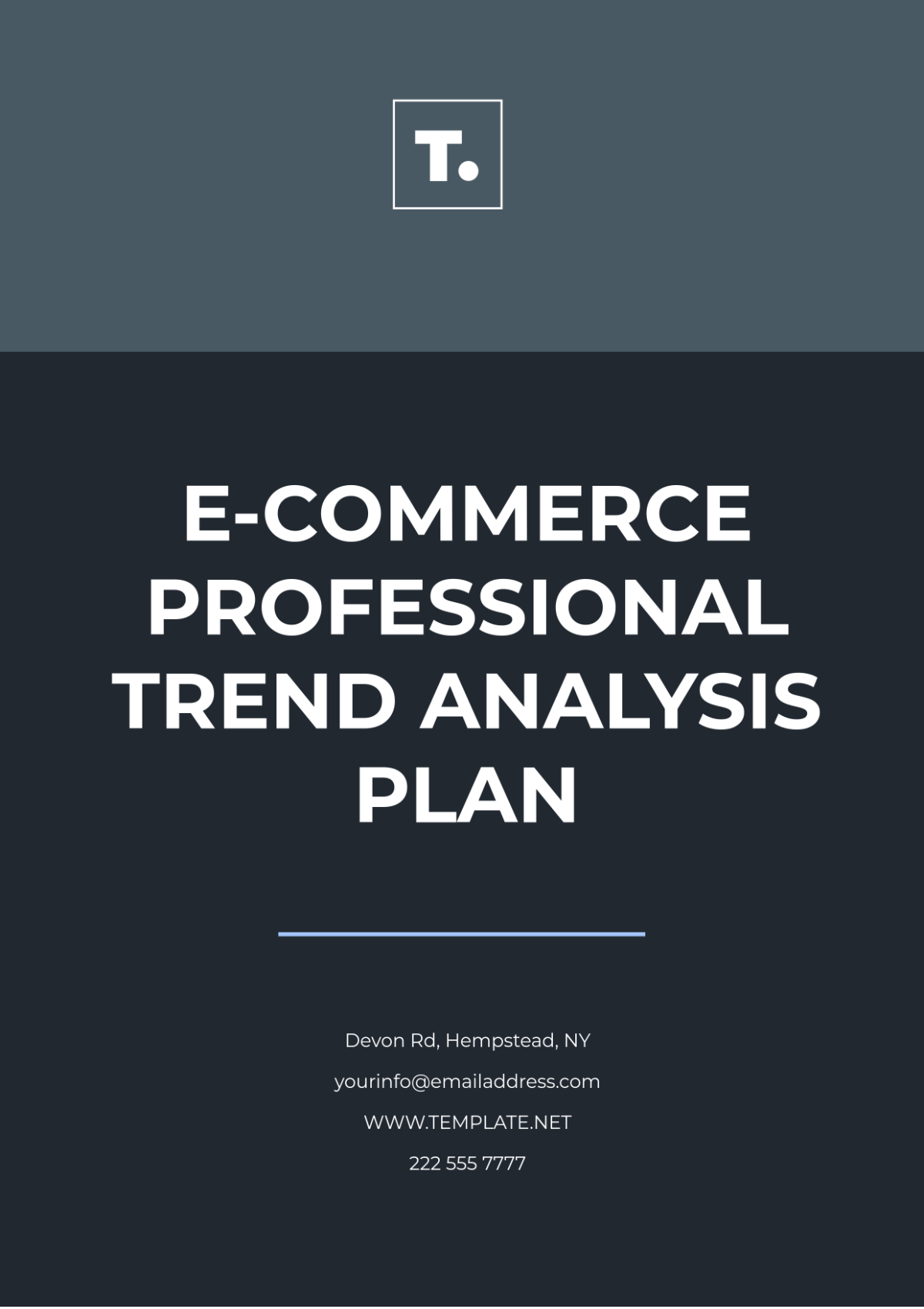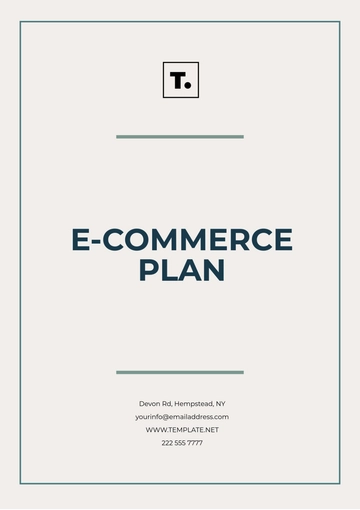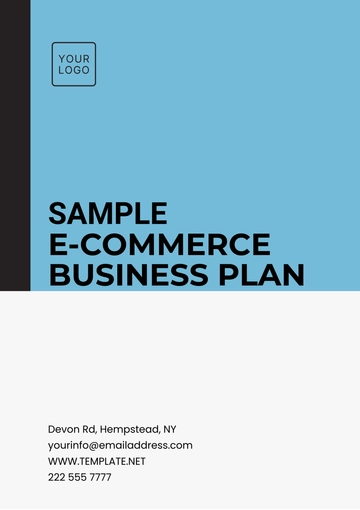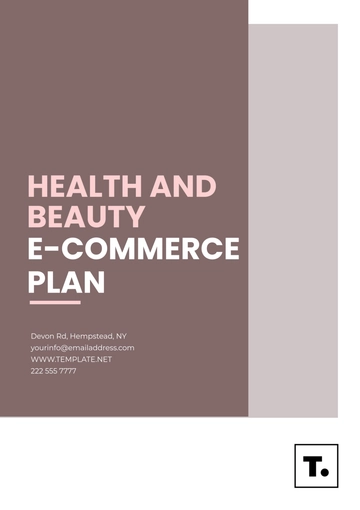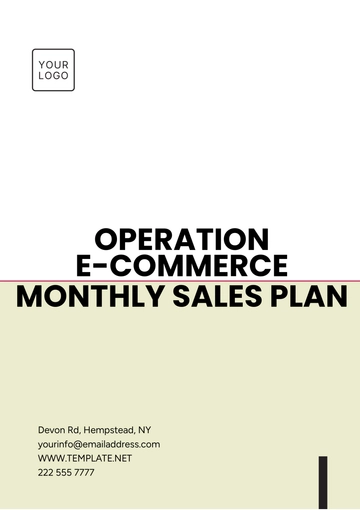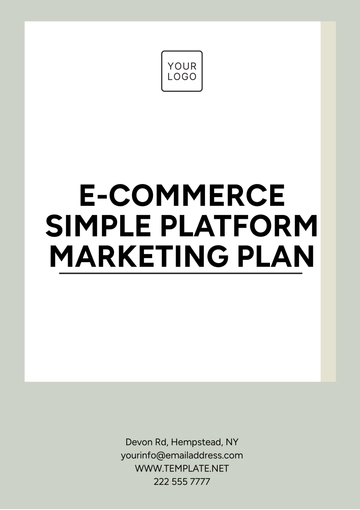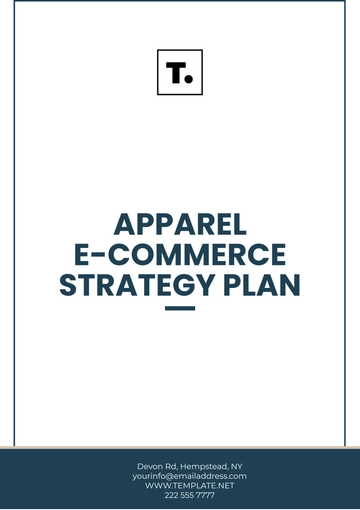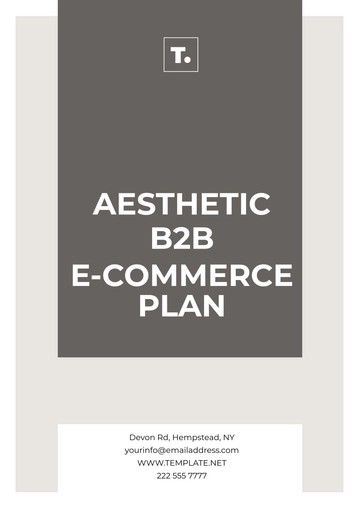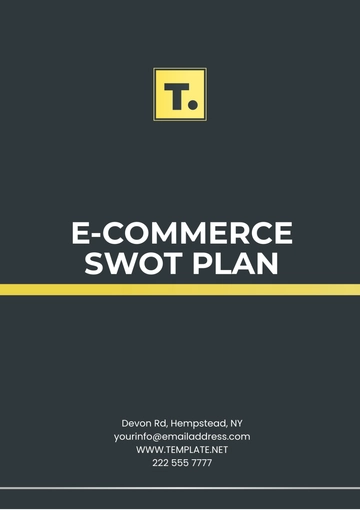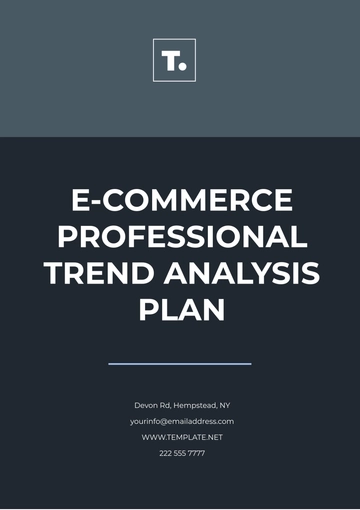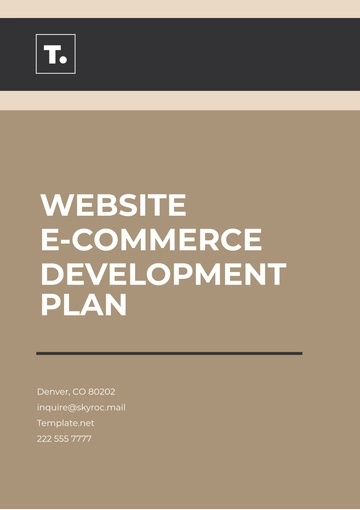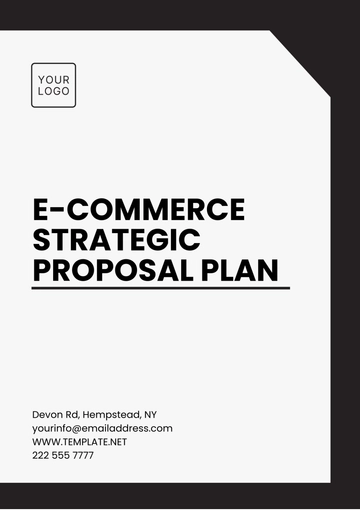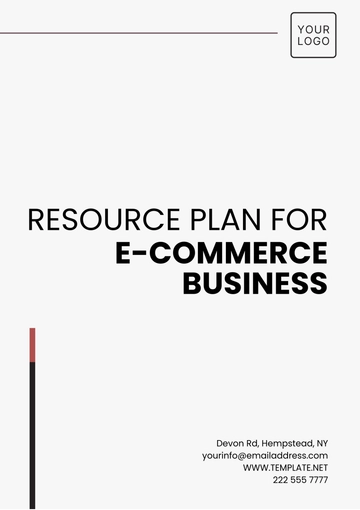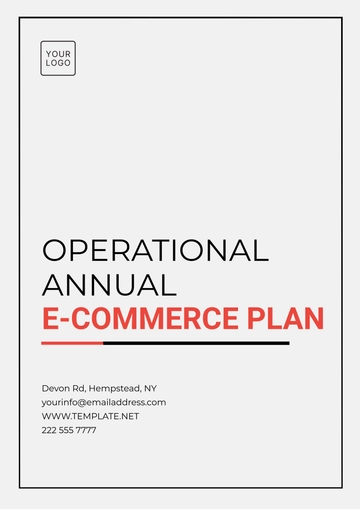E-Commerce Professional Trend Analysis Plan
Prepared By: [YOUR NAME]
Company: [YOUR COMPANY NAME]
Introduction
The e-commerce landscape is rapidly evolving, driven by technological advancements and changing consumer behaviors. This plan highlights key trends shaping the industry, helping businesses make informed decisions to stay ahead in a competitive market.
1. Market Overview
Current Landscape
The global e-commerce market is set to reach $6.3 trillion by 2050, growing at 12.5% annually. B2C and B2B sectors, along with mobile commerce, are leading this expansion. Subscription models are also on the rise.
Emerging Trends
Personalization: Tailored shopping experiences increase consumer engagement.
Sustainability: Shoppers are prioritizing eco-conscious brands.
Omni-Channel Integration: Seamless blending of online and offline shopping is now crucial.
2. Consumer Behavior
Demographic Insights
Millennials drive 38% of online sales.
Gen Z favors social commerce, with 67% making purchases via social platforms.
Baby Boomers are increasingly adopting e-commerce, especially for health and travel products.
Behavioral Shifts
3. Technological Advancements
AI: Enhancing personalization and driving 35% of Amazon’s revenue.
AR: Boosting conversions with virtual try-ons.
Blockchain: Increasing transaction security.
Digital Payments: Contactless and cryptocurrency options are expanding rapidly.
4. Competitive Landscape
Key Competitors
Amazon: Leads with 45% of U.S. market share.
Alibaba: Dominates Asia with a 38% share.
Shopify: Supports over 1 million businesses globally.
4.2 SWOT Analysis
Strengths | Weaknesses |
|---|
Market dominance, technology use | High competition, thin margins |
Advanced logistics, strong branding | Dependence on infrastructure |
Opportunities | Threats |
|---|
Expansion into emerging markets | Regulatory challenges, market saturation |
Personalization, AI integration | Data privacy issues, security risks |
5. Strategic Recommendations
Marketing: Focus on content marketing and influencer partnerships to boost visibility.
Customer Engagement: Implement loyalty programs and gather feedback for continuous improvement.
Tech Integration: Invest in platforms like Shopify Plus and utilize data analytics tools to optimize operations.
6. Performance Metrics
Sales Growth: Target a 15% annual increase.
Customer Acquisition Cost (CAC): Lower costs through targeted ads and retention strategies.
Customer Lifetime Value (CLV): Improve loyalty to increase long-term value by 20%.
Conclusion
This plan provides a clear roadmap to navigating the fast-paced e-commerce environment. By embracing trends like personalization, mobile shopping, and AI, businesses can thrive in this ever-changing landscape.
Plan Templates @ Template.net
